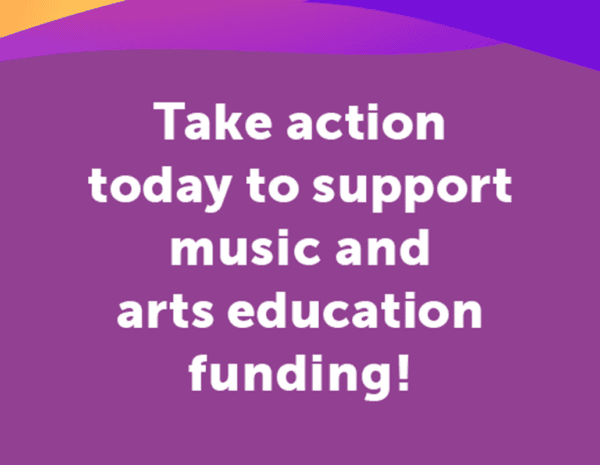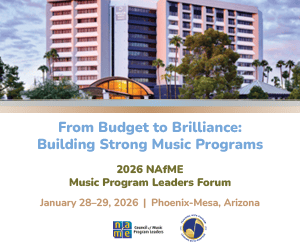/ News Posts / Support Federal Funding Impacting Arts Education—FY 2026
Support Federal Funding Impacting Arts Education—FY 2026
Updated June 2, 2025.
Music and Arts Education Advocates,
On May 30, President Trump released full details about his administration’s FY 2026 budget proposal. Cuts to federal education, including the consolidation of 18 formula and competitive grants currently funded at more than $6 billion annually, would have a devastating impact on funding for the 2026–27 school year.
Overall, the FY 2026 budget proposal cuts non-defense discretionary funding by $163 billion, including a $12 billion (15.3%) reduction to the U.S. Department of Education (ED). While the budget “preserves funding for Title I” and provides a small increase for special education services, it cuts K–12 funding by more than $4.5 billion below FY 2025. It also proposes a new K–12 Simplified Funding Program that consolidates 18 competitive and formula grant programs into a new $2 billion formula grant. Sadly, the consolidation includes Title II, Title IV-A, and the Assistance for Arts Education program—all programs that support a well-rounded education and content-specific professional development for music and arts educators. Budget documents state that “this new approach allows States and districts to focus on the core subjects—math, reading, science, and history–without the distractions of DEI and weaponization from the previous administration.”
While the budget proposal provides details about the administration’s federal funding priorities, it is still the responsibility of Congress to pass appropriations bills and a final budget before the FY 2026 fiscal year begins on October 1. This is a critical time to show your support for arts education and the need for increased access and opportunities for dance, media arts, music, theatre, and visual arts programs. We hope that you will contact your Representative and Senators and ask them to retain and increase funding for programs that can be used for a well-rounded education that includes the arts.
Please share this campaign with your colleagues and other arts education supporters.
Specifically, we urge Congress to prioritize the following in FY 2026:
- Title I, Part A—Fund at $18.67 billion to provide additional support that ensures all children meet academic standards, achieve proficiency in arts education, and improve arts education in low-achieving schools.
- Title II, Part A—Fund at $2.19 billion to support teacher recruitment and retention and build the skills and expertise of educators and to increase the number of high-quality educators, including arts educators.
- Title IV, Part A—Fund $1.6 billion for Student Support and Academic Enrichment grants, a flexible block grant that can be used to: (1) provide students with a well-rounded education that includes the arts; (2) support safe and healthy students; and (3) enhance the effective use of technology.
- Assistance for Arts Education Program—Fund at $40 million to promote arts education for all students through professional development activities for arts educators; development and dissemination of accessible instructional materials; and community and national outreach activities that strengthen and expand partnerships among schools, districts, and centers for the arts.
- National Endowment for the Arts—Fund at $209 million to fund projects that help children and youth acquire knowledge and skills in the arts and apply the arts to learning in other subjects; and to support partnerships between arts institutions and K–12 schools and institutions of higher education.
This campaign includes a template message for your letter to Congress, but we encourage you to personalize your message and share why YOU support arts education.
Learn more about the Arts Education Alliance and the impact of federal funding on music and arts education.
Published Date
May 5, 2025
Category
- Advocacy
- Advocacy
- Federal Advocacy & Public Policy
Copyright
May 5, 2025. © National Association for Music Education (NAfME.org)





